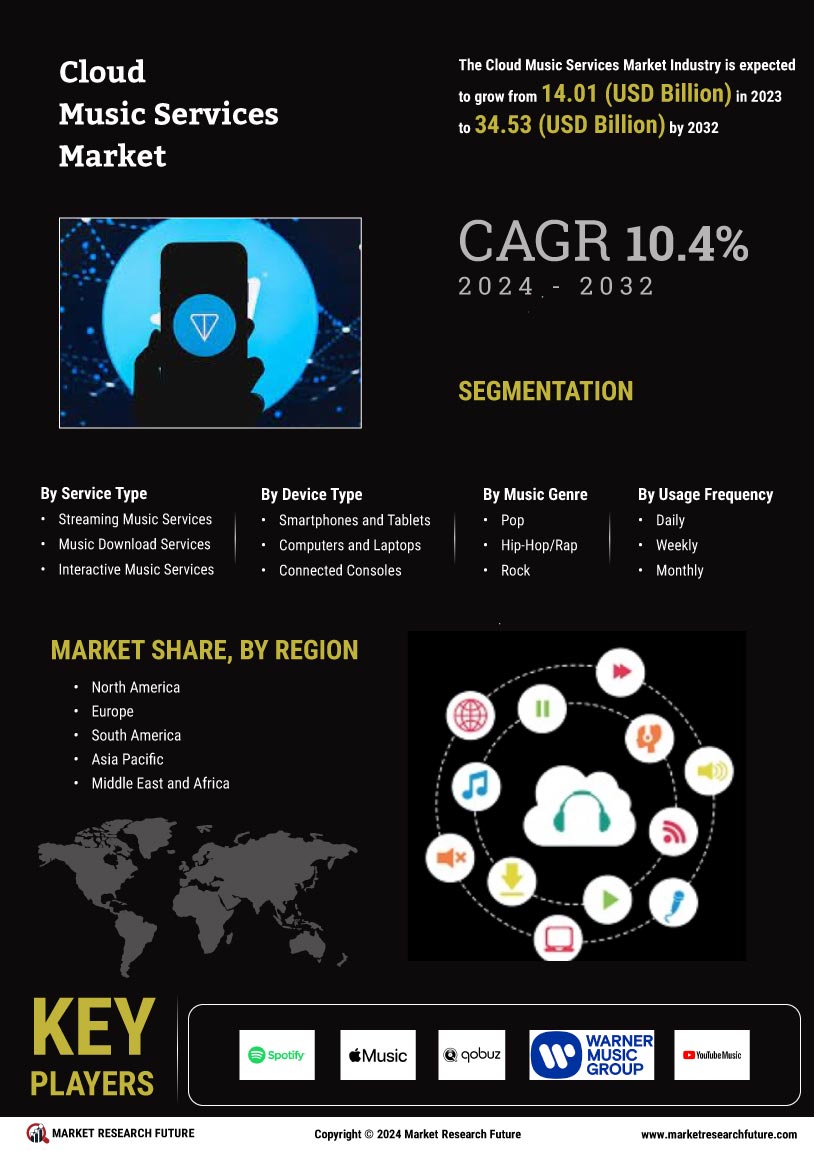Expansion of Music Catalogs
The Cloud Music Services Market is witnessing an expansion of music catalogs, which plays a crucial role in attracting and retaining subscribers. As of October 2025, major platforms are reported to offer millions of tracks, including exclusive releases and diverse genres, catering to a wide array of musical tastes. This extensive catalog not only enhances user satisfaction but also encourages users to explore new artists and genres, thereby increasing engagement. Additionally, partnerships with record labels and independent artists are becoming more common, further enriching the content available on these platforms. This expansion is indicative of a competitive landscape where companies in the Cloud Music Services Market are continuously seeking to differentiate themselves through unique offerings and comprehensive music libraries.
Growth of Social Media Influence
The Cloud Music Services Market is significantly influenced by the growth of social media platforms, which serve as vital channels for music discovery and promotion. As of October 2025, platforms like TikTok and Instagram are pivotal in shaping music trends, with viral challenges and user-generated content driving listeners to streaming services. This social media synergy not only amplifies the visibility of artists but also encourages users to share their musical preferences, creating a community around music consumption. Consequently, music streaming services are increasingly leveraging social media for marketing strategies, recognizing its potential to attract new subscribers. This interplay between social media and the Cloud Music Services Market indicates a dynamic environment where user engagement and content virality are paramount.
Rising Demand for Streaming Services
The Cloud Music Services Market experiences a notable surge in demand for streaming services, driven by the increasing preference for on-demand music access. As of October 2025, the number of music streaming subscribers is projected to reach over 600 million, reflecting a significant growth trajectory. This trend is largely attributed to the convenience and flexibility offered by cloud-based platforms, allowing users to access vast music libraries from various devices. Furthermore, the proliferation of smartphones and high-speed internet connectivity enhances the accessibility of these services, making them more appealing to consumers. Consequently, this rising demand is likely to propel the Cloud Music Services Market forward, as companies strive to innovate and enhance user experiences to capture a larger share of the market.
Emergence of Subscription-Based Models
The emergence of subscription-based models is reshaping the Cloud Music Services Market, providing consumers with flexible payment options and access to premium content. As of October 2025, subscription services are estimated to account for over 70% of the total revenue generated in the music streaming sector. This model not only offers ad-free listening experiences but also includes exclusive content, such as live performances and artist interviews, enhancing the overall value proposition for subscribers. Additionally, tiered subscription plans allow users to choose options that best fit their needs, further driving market growth. The increasing acceptance of subscription-based models suggests a shift in consumer behavior, where users prioritize quality and convenience in their music consumption, thereby solidifying the Cloud Music Services Market's position in the entertainment landscape.
Integration of Artificial Intelligence
The integration of artificial intelligence (AI) technologies is transforming the Cloud Music Services Market, enhancing user experiences through personalized recommendations and smart playlists. As of October 2025, AI-driven algorithms are increasingly utilized to analyze user listening habits, enabling platforms to curate tailored content that resonates with individual preferences. This technological advancement not only improves user satisfaction but also fosters greater user retention, as listeners are more likely to remain engaged with services that understand their tastes. Moreover, AI can assist in identifying emerging trends and artists, allowing platforms to stay ahead of the curve in a rapidly evolving market. The ongoing adoption of AI in the Cloud Music Services Market suggests a future where personalization becomes a standard expectation among consumers.


















Leave a Comment